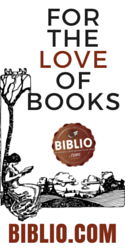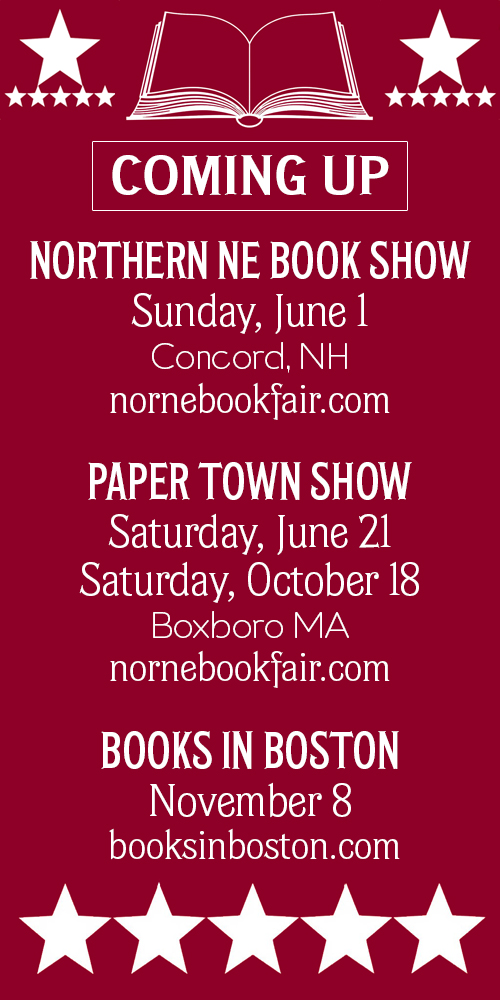One Hundred Years of Latitude
Lately I’ve been reading Out of Print & Into Profit, a curious title for an excellent book subtitled A History of the Rare & Secondhand Book Trade in Britain in the 20th Century. Commissioned by the Antiquarian Booksellers’ Association to celebrate its centenary, it was recently published by the British Library and Oak Knoll Press (2006).
The strength of the work is in the diversity of perspective and viewpoint reflected in the twenty-two chapters written by nearly as many contributors. Every level of the trade is considered, from Frank Herrmann’s “The Role of the Auction Houses” to Michael Harris’s “The London Street Trade.”
Mr. Herrmann, historian of Sotheby’s (Sotheby’s, Portrait of an Auction House, Chatto & Windus, 1980) and one of the original Bloomsbury Book Auctions partners, gives a brief overview of auction house history (especially Sotheby’s, Christie’s and Bonhams) but uses a lot of space discussing the “ring” and “knock-out”—a controversial (to say the least) activity in which bidders colluded in order to artificially depress sales results. (I suppose this would have been the mirror image of “shilling” or “taking bids off the wall”, something auctioneers have been known to do in order to artificially inflate prices). Even though a lot of early ABA members were not above participating in the “ring”, Basil Blackwell and others waged a long and rather fractious campaign to put a stop to the practice.
Mr. Harris puts a human face to the street sellers or “barrow boys”, the bottom feeders who sold in street markets throughout London and in later years were relegated to a stretch along Farringdon Road until sometime in the 1980s or early 1990s when they disappeared altogether. They played an important role clearing unwanted books from public and private libraries and the stocks of established booksellers. As in all clearing out operations plenty of wheat was hidden in all the chaff and the possibility of turning up a “sleeper” or two is what lent excitement to and fueled that segment of the trade.
Barry Shaw, former editor of the now defunct Bookdealer, contributed a concise chapter entitled “Book Trade Weeklies,” a retrospective of book trade publications that have nearly all been supplanted by the Internet. Philippa Bernard’s “The Bookshops of London” is a good read, as is Marc Vaulbert de Chantilly’s “Booksellers’ Memoirs: The Truth about the Trade?” and Robert Pirie’s “Reminiscences of a Book Buyer”. Other writers include Richard Ford, Anthony Hobson, Paul Minet, Angus O’Neill and Anthony Rota.
In “West Country Bookshops in the 1960s,” one of three contributions by Paul Minet, he recalls an experience that many of us who are or have been in the antiquarian book trade can relate to.
I remember a day in the early 1960s when my wife and I were driving back from a house near Newton Abbot, where we had been successful in buying a roomful of books for around £250, a fair sum at that time. The condition was that we must clear the lot within 48 hours because the house was being sold…Our bid was successful solely because we offered to clear them all within the time limit, which trumped a slightly higher offer from the Neptune Bookshop in Paignton.
I think it was on the second of three trips in our small car that I misjudged the petrol. We were clearly going to run out before we got back to our home in Hartland in North Devon. It was quite late and there was only one filling station between us and Hartland, a filling station where we didn’t know the owner. Credit cards and even bank guarantee cards did not exist… (and) I had only a business cheque, which would not be acceptable. We turned out our pockets and the car’s pockets and come up with three shillings and ninepence, enough for one gallon of petrol, with threepence to spare. We made it home, rustled up a little money from the local pub and made the third and final trip that night, dropping the house key back through the door and drinking soup from a thermos flask on Dartmoor at 3 a.m. I can still conjure that sparkling night as if it were yesterday…
Bookselling in the country was a risky business then as it is now but for different reasons. The PBFA fairs had not yet been organized and the West Country was a long way from the much larger and more affluent London book market—as Mr. Minet says “We were always on the edge, as indeed were most of the booksellers we knew.” Nowadays booksellers who don’t own their own premises tend to find themselves working for their landlord—a situation a little suggestive of the old Lynyrd Skynyrd song, “Working for MCA.”
The book should be read slowly and at intervals, repressing the urge to simply plough through it, and depending on the chapter writer’s prose style it’s best read while relaxing in a favorite chair while enjoying a good brandy or glass of Oregon pinot noir
Roy Meador
Roy Edward Meador, a friend and longtime contributor to this magazine, died on January 16, 2007. When Helen called with the bad news we realized he must have collapsed shortly after mailing us a review of three books by Jimmy Carter, including the latest that has stimulated so much controversy. That review appears on page 38.
Roy was born in Oklahoma in 1929 and growing up there during the depression and dust bowl must have had a lot to do with his lifelong empathy for society’s underdogs—he always came across like a small “d” democrat in the truest, non-partisan sense of that word. As a child his family didn’t have money for books, but the local public library was there to fuel the reading habit that remained with him until the end of his life. And later on when he had money to buy his own books, he would never forgot his debt to the public libraries of those years growing up in Oklahoma.
Although he earned his living as a technology and science writer (mainly in the pharmaceutical field), he was something of a polymath and his published work covers a wide range of subjects. Thirty years ago his Future Energy Alternatives: Energy Problems and Prospects (Ann Arbor, 1977) explored the subject long before it became fashionable and his bibliography also includes Capital Revenge (a book on capital punishment), Franklin, Revolutionary Scientist (1975) and his latest collaboration with Marvin Mondlin, Book Row: An Anecdotal and Pictorial History of the Antiquarian Book Trade (NY Carroll & Graff, 2004). He became interested in bookbinding and in 1975 after taking a course in Dexter, Michigan he even wrote and produced a small pamphlet (in blue wrappers, stitched as issued) entitled Bound to Bind, an interesting “olla podrida” of bookbinding lore.
Over the years Roy also contributed articles to many periodicals including Biblio and Book Source Magazine, and one I will always treasure is Call Him Writer! (BSM, October, 2002), written to commemorate the 100th anniversary of John Steinbeck’s birth
During the Dust Bowl years, even as a kid, I knew plenty of Joads. I pulled cotton with my mother and sister for thirty cents a hundred pounds on their rundown, soil-starved farms. I had seen them heading west on the Mother Road, Route 66, and frankly envied them, because most of us had bought into the legend that milk and honey waited free for the taking beyond the California horizon. My own father probably would have taken us to California in search of work and a better life if he had been able to promote fifty dollars for a jalopy that might, with considerable coaxing and fixing flats, cross the plains and desert to the friendly, we pitifully and wrongly thought, Pacific shore…
If you’re new to this magazine and didn’t read it at the time, you can find “Call Him Writer!” archived on our website at: www.booksourcemagazine.com.
Roy was also a naval combat veteran during the Korean War and experienced enough to make him detest both war and those who promote it—pretty strong stuff from a man who always looked for the best in everyone and everything. And when the next presidential campaign cycle gets into full gear, I’d like to think Roy will be there in spirit, supporting fellow combat veteran/candidates in the mold of Chuck Hagel or Jim Webb.
Anyone wanting to honor Roy’s life might consider making a donation to the Carter Center—we already have. You can make your check payable to “The Carter Center” (noting that it’s in Roy’s memory) and mail it to: The Carter Center, One Copenhill, 453 Freedom Parkway, Atlanta, GA 30307. For more information you can also call Randy Slaven at (404) 420-5109 or visit the website at www.cartercenter.org.


























